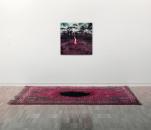'‘I don’t belong to generation green,’ announces Jill Jones in her poem ‘Leaving It To the Sky’ (Dark Bright Doors, 2010); and in her blog Ruby Street she has voiced her discomfort with having her work seen as embodying ‘a form of comfortable ecopoetic with some fancy philosophic or metaphysical flourishes’. In ‘Leaving It To the Sky’, her narrator writes instead of an equivocal relationship to a particular city, memories of a suburban working-class childhood, and the need to avoid being allocated to any school of thinking, any ‘overarching narrative’, at all. The poem is not primarily concerned with landscape or the natural world, but opens itself to difference and contradiction, leaps of association, a refusal to be disciplined into membership of an accepted group of concerned writers.
'This paper will consider how Jill Jones tackles the ecopoetic as process rather than category. Using the work of Walter Benjamin and Timothy Morton, I argue that the ecopoetic in this sense may have little to do with a traditional sense of ‘nature’ – which has been absorbed, in Joan Retallack’s words, ‘into literary tropes and musings fed by chronically ego-bound, short-sighted human desires’. Instead, as this paper will demonstrate, Jones often reaches out to otherness, incorporating the languages of popular culture, journalism, politics, technology and the corporate: an experiment in contemporary consciousness, the human and the non-human inextricably entwined.' (Publication abstract)




